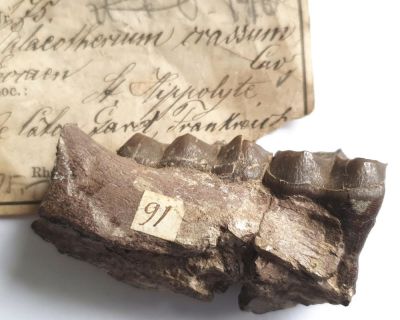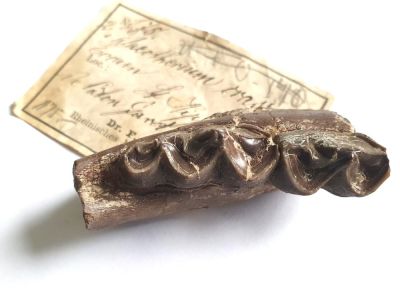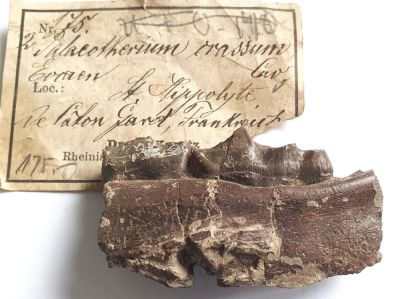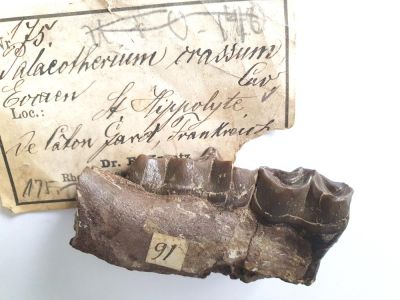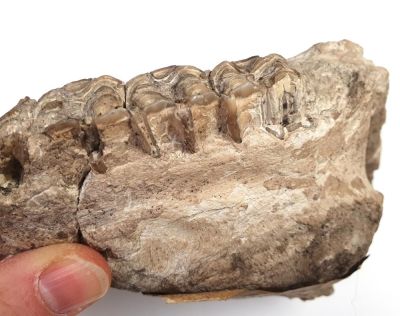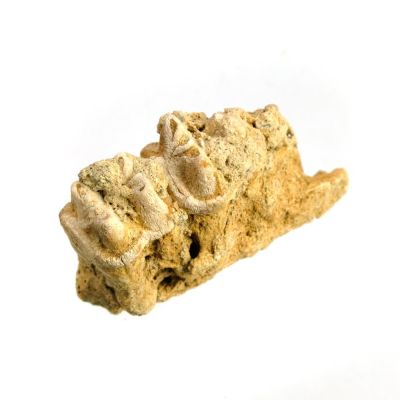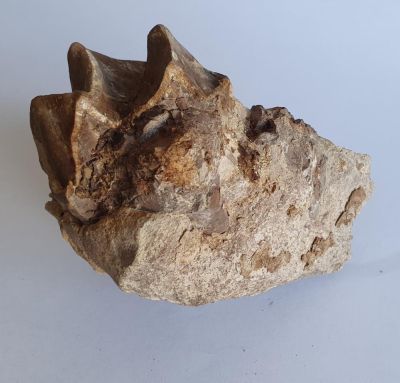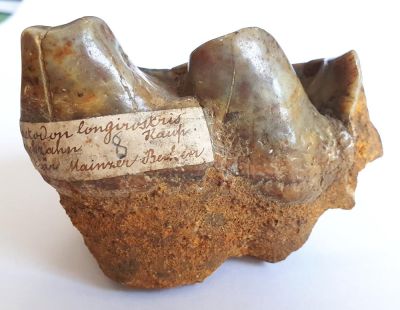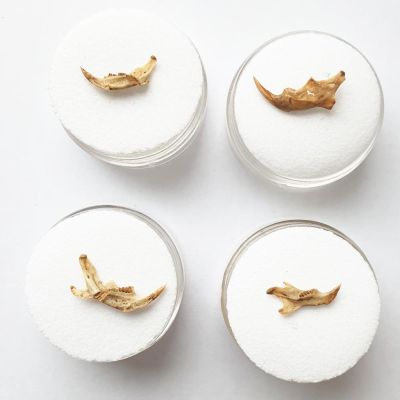Palaetherium crassum, jaw fragment
This is a jaw fragment of the proto-horse Palaeotherium. It still contains two molars.
The cusps of the molars have a crescent or V-shape and are connected by enamel ridges, which is often described as selenolophodont dentition. Low-crowned molars, as in this specimen, indicate a diet of foliage and fruit in the forest. High-crowned molars, like those of today's horses, developed as a result of the change in habitat from forest to steppe and the associated dietary switch to grasses during the Miocene.
The site is unfortunately depleted, which is the reason why finds of these specific, dark jaw fragments are becoming increasingly rare.
Age: Eocene;
Locality: Gard, France
Size: 6 x 3 x 1 cm
The fossil is supplied including a copy of the historic label and a new label.
The colors on the photo may differ slightly from the original due to technical reasons.
Login

